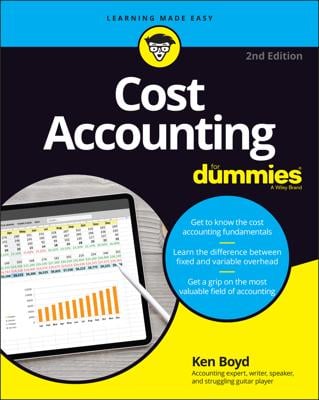You should always have a good feel for how your organization's operating expenses behave relative to sales activity. But separating variable and fixed operating expenses is not quite as simple as it may seem. One problem that rears its ugly head is that some expenses have both a fixed cost component and a variable cost component.
A classic example was the “telephone and telegraph” expense (as it was called in the old days). Businesses had to pay a fixed charge per month for local calls, but long-distance charges depended on how many calls were made and to where.
Modern communication networks using cellphones and the Internet are increasingly flat-fee. In any case, accounting should separate the fixed and variable cost components of expenses for reporting purposes.
Variable expenses
Virtually every business has variable expenses, which move up and down in tight proportion with changes in sales volume or sales revenue. Reducing variable expenses means more money in your pocket every time you make a sale.
Here are examples of common variable expenses:
The cost of goods sold expense, which is the cost of products sold to customers
Commissions paid to salespeople based on their sales
Franchise fees based on total sales for the period, which are paid to the franchisor
Transportation costs of delivering products to customers via FedEx, UPS, and freight haulers (railroads and trucking companies)
Fees that a retailer pays when a customer uses a credit or debit card
Cost of goods sold is usually the largest variable expense of a business that sells products. Other variable expenses are operating expenses, which are the costs of making sales and running the business. The sizes of variable operating expenses, relative to sales revenue, vary from industry to industry.
Delivery costs of Wal-Mart and Costco, for instance, are minimal because their customers take the products they buy with them, so they only have to focus on deliveries to a relatively stable number of warehouses. Other businesses deliver products to their customers’ doorsteps, so that expense is obviously much higher (and dependent on which delivery service the company uses — FedEx or UPS versus the U.S. Postal Service, for example).
Fixed expenses
Fixed operating expenses include the different costs that a business is obligated to pay regardless of changes in sales levels. As an example of fixed expenses, consider the typical self-service car wash business — you know, the kind where you drive in, put some coins in a box, and use the water sprayer to clean your car.
Almost all the operating costs of this business are fixed: rent on the land, depreciation of the structure and the equipment, and the annual insurance premium don’t depend on the number of cars passing through the car wash. The main variable expenses are the water and the soap, and perhaps the cost of electricity.
Fixed expenses are the costs of doing business that, for all practical purposes, are stuck at a certain amount over the short term. Here are some more examples of fixed operating expenses:
Gas and electricity costs to heat, cool, and light the premises
Employees’ salaries and benefits
Real estate property taxes
Annual audit fee (if the business has its financial statements audited)
General liability and officers’ and directors’ insurance premiums
Be careful not to overreact to a temporary downturn in sales by making drastic reductions in your fixed costs, which you may regret later if sales pick up again.
Margin is your operating profit before fixed expenses are deducted. Don’t confuse this number with gross margin, which is profit after the cost of goods sold expense is subtracted from sales revenue but before any other expenses are deducted.
Your attention should be riveted on margin per unit, and you should understand the reasons for changes in this key profit driver from period to period. A small change in unit margin can have a big impact on operating earnings.
Increasing margin can have huge, long-term negative impacts on your business if you don’t consider potential cost savings in light of your entire organization. Outsourcing customer service may shave something off the bottom line, but ultimately lead to plummeting customer satisfaction scores and lost business.

